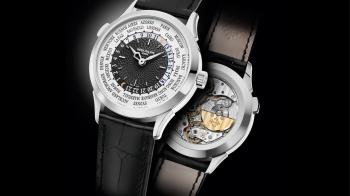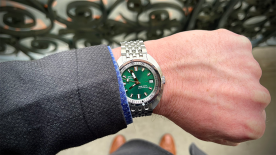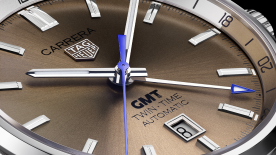The micro-rotor serves to rewind automatic movements, but stands out from traditional rotors in terms of its size, it shape and its position. The customary oscillating weight is a flat half-disk topping the movement. The micro-rotor is a small, thick half-disk fully integrated into the movement. It was invented almost concomitantly in 1957 by Buren and Piaget, and subsequently popularized by Universal Genève, which had patented its own in 1954. It represented a quest for technical performance, and of course for greater slimness. These two objectives have remained in place and are now even more strongly present. Of the three original firms involved, only Piaget continued using the micro-rotor, which proved a determining factor in the second race for horological slenderness undertaken in the 2000s. One should also mention a fourth actor that came to play an indispensable role in the field : Patek Philippe. In 1997, in the midst of the quartz crisis, the brand developed an ultra-thin self-winding movement, named Caliber 240 in accordance with its thickness. To achieve this, the brand had recruited the creator of the Universal caliber, thereby vividly proving the importance of experience in conceiving these distinctive movements.
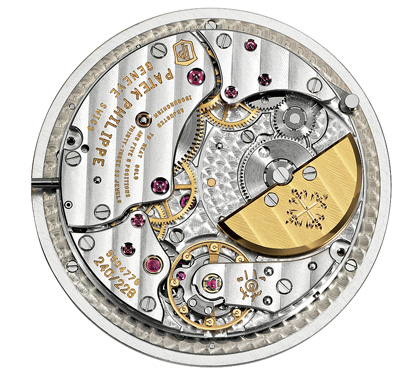
New lease on life
In the 2000s, the pursuit of perfection and diversification was an integral part of the grand watchmaking revival. To stand out from the crowd, several brands opted for the micro-rotor despite its inherent disadvantages. Given its lower inertia than a large-size rotor, it winds barrels less efficiently. By way of example, the newly introduced Montblanc micro-rotor requires 11 hours on a Cyclotest machine stimulating daily wear to be fully wound, as against eight hours for a standard automatic model. To compensate for this fact, the micro-rotor is made from extremely heavy materials : tungsten in cheaper versions, and 22K gold or even platinum for prestigious interpretations. It thereby achieves standard and even comfortable power reserves. Such is the case of several Roger Dubuis movements, of the Vaucher Caliber 5401 used by Hermès, Richard Mille and Parmigiani, and also of Caliber 1.98 by Chopard, which has a 65-hour power reserve.
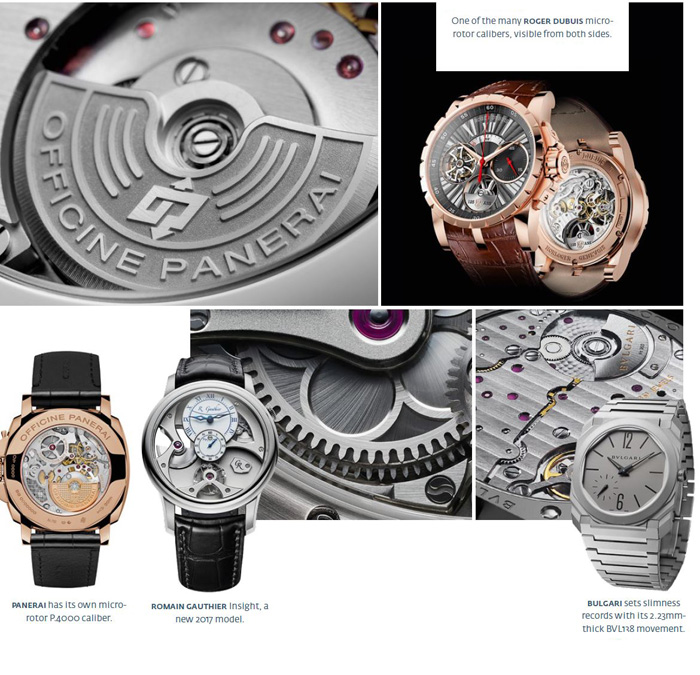
Expansion
In 2002, Girard-Perregaux had developed a variation of its Tourbillon with Three Gold Bridges featuring a micro-rotor concealed beneath the barrel, which meant it went almost unnoticed. Based on the Peseux 7001 caliber, MCT has created its own movement that it still uses to this day. Then came the turn of Laurent Ferrier. This technically elegant and distinctive solution is still in vogue, since no less than three brands have opted for this solution in 2017 : Romain Gauthier, Peter Speake-Marin and Bell&Ross (via its movement producer MHC). But the big names are still in search of the most favorable technology/ergonomics/slenderness ratio for the micro-rotor. Panerai and Bulgari have adopted this solution and their technical choices are representative of the current trend. The micro-rotor is definitely more efficient when it is heavy, and even more so if it is broad, meaning as part of wide movements. Calibers have definitely grown, from Patek Philippe’s 240 movement measuring 27.5mm to the 36.6mm BVL138 by Bulgari. The concept is also becoming increasingly flexible and adaptable to movements ranging from the simplest to the most elaborate, as showcased in the Grande Complication de Cartier.

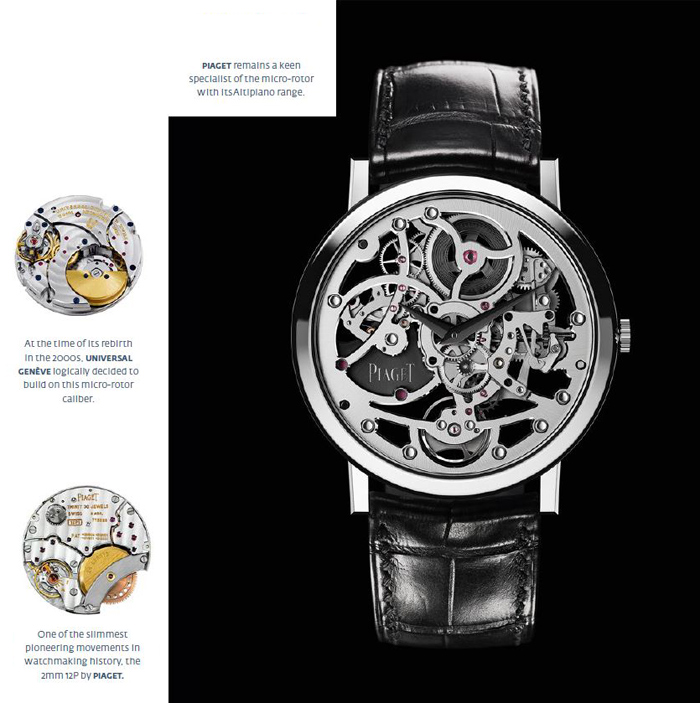
Paul's position
The micro-rotor is a great way of saving height in a movement for an ultra-thin watch or for freeing up space to show off a wonderful open-worked movement. But as I discovered earlier this year while researching an article for WorldTempus, micro-rotor movements do not come cheap. Only a handful of brands offer micro-rotor watches below 10,000 Swiss francs, making them a watch for the connoisseur. - Paul O'Neil, WorldTempus editor-in-chief
